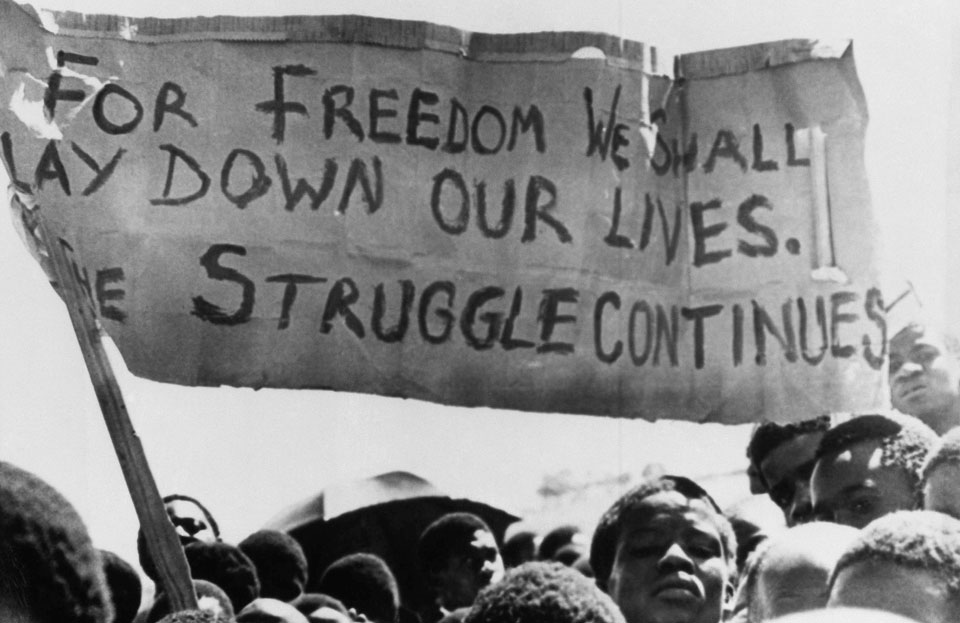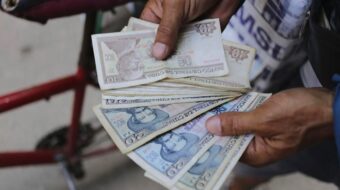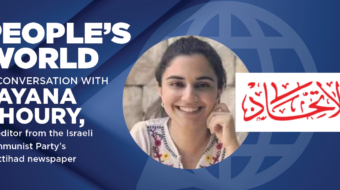
Thirty years after the fall of apartheid in South Africa, a couple of generations have now grown up without first-hand knowledge of the expansive and united movement which helped put an end to the racist regime. The recently published book International Brigade Against Apartheid: Secrets of the People’s War That Liberated South Africa takes a closer look at the international solidarity which helped shoulder the burden of overthrowing apartheid.
This collection, edited by the indefatigable Ronnie Kasrils—former cadre of Umkhonto we Sizwe (MK), the armed wing of the African National Congress (ANC), and former government minister post-apartheid—is composed of contributions from comrades who were themselves members of the struggle. Contributors hail from other Southern African states as well as Europe, North America, Palestine, Oceania, Asia, and quite crucially the former socialist bloc. The tome is split into two parts: first, accounts from the underground struggle (mostly MK); then from the broad, above-ground Anti-Apartheid Movement (AAM). 
Clocking in at above 300 pages and 64 separate articles, this collection absolutely bursts at the seams with struggle, sadness, stress, triumph, questions, and life. Readers may find it difficult to follow at first until the rhythm sets in and a grand narrative begins to take shape. And what indeed does take shape is a stunning and powerful movement that shook the world, rattled the most powerful governments of the time (Reagan in the U.S., Thatcher in the U.K., Mulroney in Canada, et al.), and mustered enormous energy and solidarity.
Contributors include several average people who chose to enlist in MK and participate in crucial ways to support the armed struggle: smuggling weapons across borders, building weapons caches, maintaining safe houses, and so on. Others describe the struggle in other nations to raise awareness about the crimes of apartheid and mobilize resources towards the struggle.
Of particular importance was the fight to get the labor movement on board. Writing from Canada, for instance, Domenic Bellissimo shines a very informative light on this issue, highlighting the timid approach taken by unions affiliated to the International Confederation of Free Trade Unions. Despite this damper placed on the solidarity of Canadian unions, rank and file activists soon found ways to challenge the leadership and put together strike funds for SA unions, participate in information campaigns, and much more. Some unions also respected the boycott, refusing to move South African goods, and generally stood up to the red-baiting which was the go-to smear against anti-apartheid activists.
It would be wrong to overlook the support of the socialist bloc, in particular the German Democratic Republic and the Soviet Union, who offered support that simply couldn’t be found elsewhere. Training in military strategy, counter-surveillance, underground work, and so on, was never on offer from even the most progressive governments of Scandinavia, who themselves offered generous funding to the ANC. Soviet and other socialist specialists took on the bulk of the advanced training which MK and the ANC required to be successful in their task of militarily challenging white supremacy.

Today, the term “apartheid” is still well-known regarding South Africa but has taken on a new meaning in the struggle to oppose Israeli apartheid against Palestinians. Indeed, the Palestinian Boycott-Sanctions-Divestment (BDS) movement was largely influenced by a similar tactic in the original Anti-Apartheid Movement. This book illustrates rather well why this tactic was adopted and what type of movement Palestinian solidarity activists are trying to build. People involved in the BDS movement would probably benefit from the context elaborated on in this book. That said, we can all learn from the struggles of those who came before us.
The back cover states the volume “reads like a war-time thriller” and it’s not wrong! But it’s more than that: It’s an education in international solidarity, in building unity, in working as a unit, in what you need to take on a monster and win. Though many contributors express disappointment regarding the current situation in South Africa, this hardly takes away from their courage and dedication to a worthy ideal.
International Brigade Against Apartheid: Secrets of the People’s War That Liberated South Africa
Edited by Ronnie Kasrils with Muff Andersson and Oscar Marleyn, foreword by Pallo Jordan.
First published by Jacana Media (Pty) Ltd in 2021;
Daraja Press edition (April 2022) available in North America.












Comments